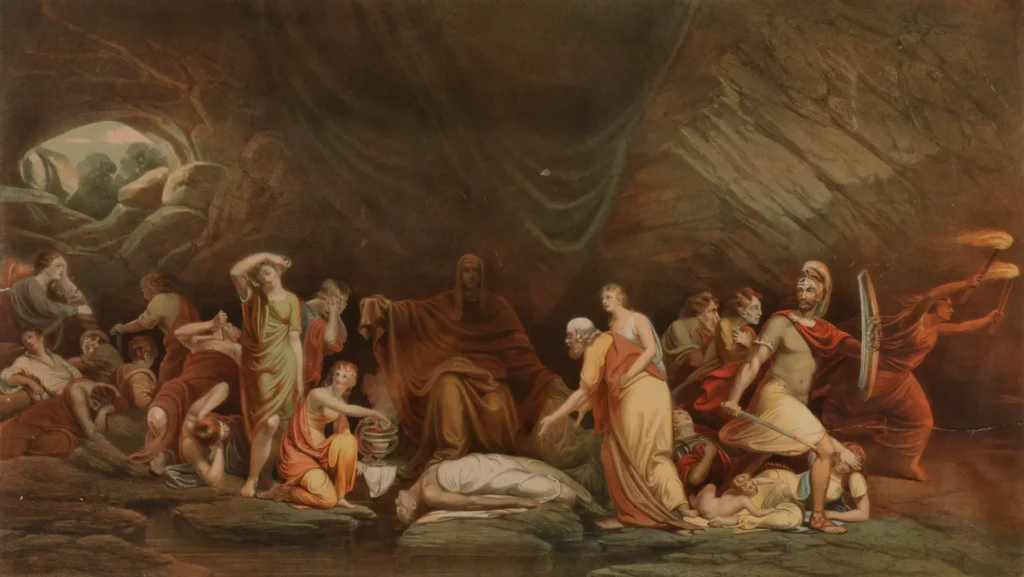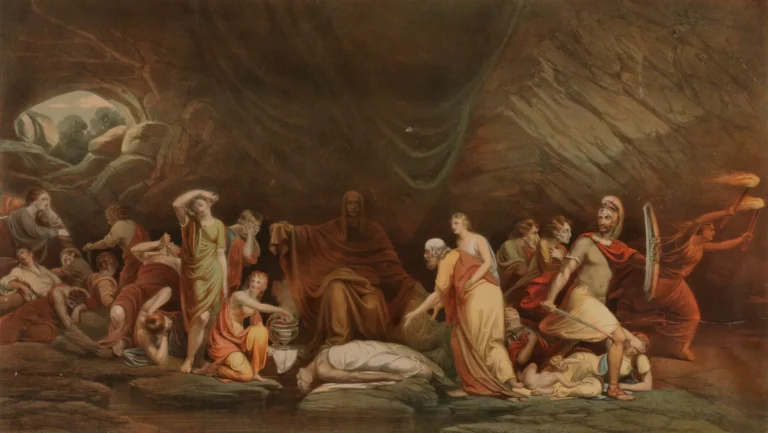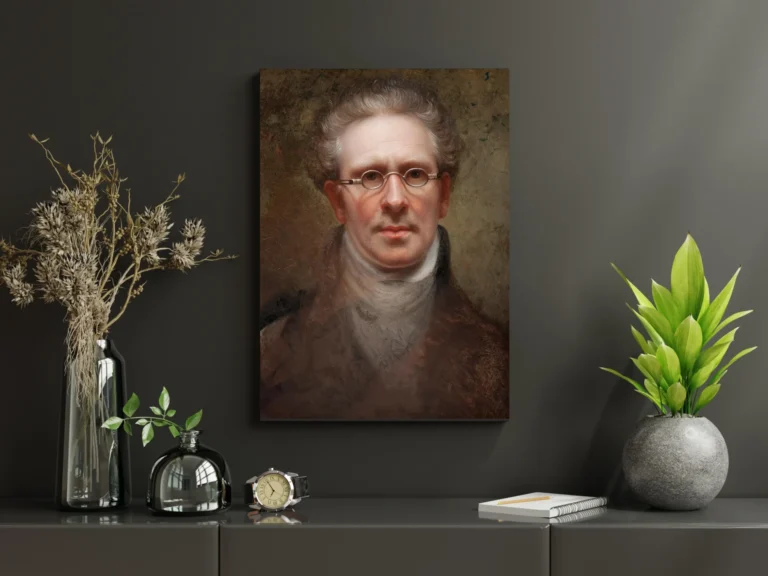The Court of Death
The Court of Death is a monumental painting created by Rembrandt Peale in 1820, capturing the universality of death as a great equalizer. Dominated by the central figure of Death, the composition intricately includes symbols of war, sin, and morality, reflecting Peale's departure from portraiture into the realm of history painting. The artwork makes a poignant statement about life, decay, and the moral choices that define human existence, thus cementing its place in art history and Peale's legacy.
Year 1820
About the Artwork
Inspired by a poem from an Anglican bishop, The Court of Death emerged during a period of moral reflection in the early 19th century. Rembrandt Peale aimed to convey the undeniable force of death and its impact on humanity through various allegorical representations. The painting contrasts the grim aspects of war and indiscipline against the solemn acceptance of death by Old Age, guided by Faith. This duality serves not only as a narrative of life's transient nature but also as an invitation for viewers to ponder their own moral standings. Peale, who was famous for his portraits, expands his artistic boundaries in this ambitious piece, showcasing not just skill but a deep engagement with the philosophical underpinnings of life and mortality.










